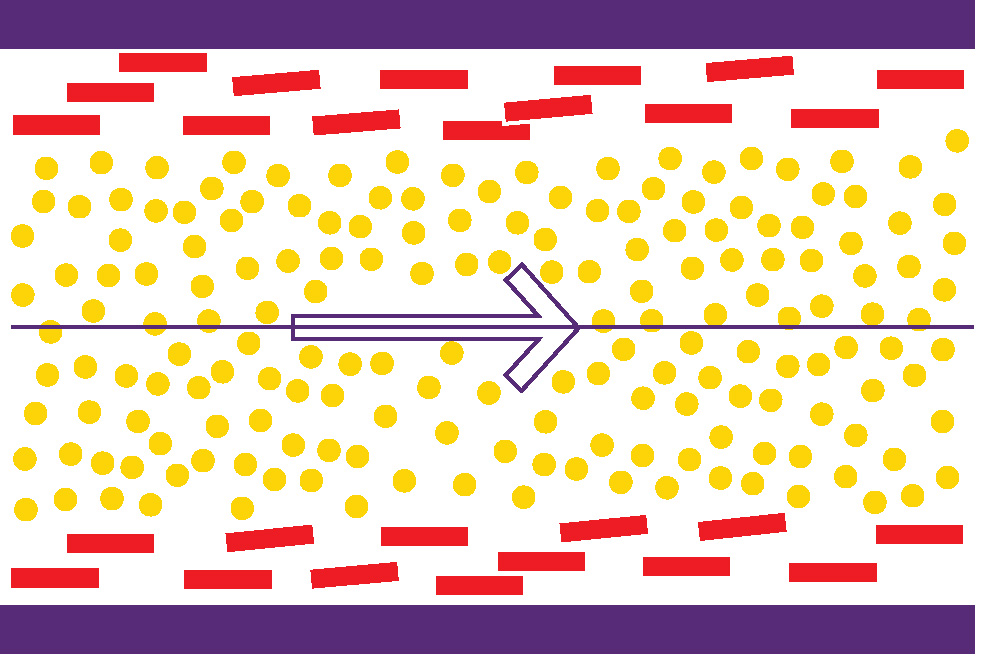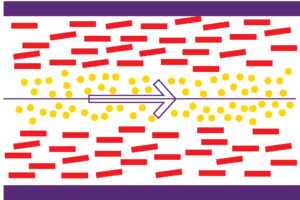Fiber orientation plays a significant role in the shrinkage and warpage of a molded part. Let’s look at why.
Fiber -filled composite plastic materials will induce anisotropic mechanical properties. Fiber reinforced parts have directional mechanical properties that are stronger in the direction (or parallel) to the flow and weaker transverse (or perpendicular) to the flow. Fiber is about 40 times more rigid than the plastic surrounding it while its thermal expansion is only 1/30th of the plastic. Thermal shrinkages are greater in the transverse direction and lower in the flow direction.
High internal stresses can develop in unexpected areas of parts with complex 3D fiber flow and packing behavior. By utilizing 3D simulation techniques, you will gain a better understanding and can evaluate this complex orientation behavior.
The cross-section of a molded part can be divided into three layers: the frozen, or skin layer, the shear layer, and the core layer. Fiber orientation develops radially from the gate; the fibers align themselves with the radial flow of the material. In the core layer, the fibers are aligned radially and traverse to the flow direction.
Several things may influence fiber orientation. One of the key factors is the intrinsic or inherent viscosity of the material itself. For example, PP has a high intrinsic viscosity which results in a wide core layer and a narrower shear layer. Nylon material has a lower intrinsic viscosity resulting in a narrow core layer and a wider shear layer.

High Intrinsic Value (PP Material)
- Wide Core Layer
- Narrow Shear Layer

Low Intrinsic Value
- Narrow Core Layer
- Wide Shear Layer
Plastic parts with more complex 3D geometries will need thorough evaluation to determine the impact of the fiber orientation on shrinkage and warpage results. Although the part geometry and gate location are important factors in determining fiber orientation results, the plastic material’s viscosity, PVT behavior, fiber type (glass or carbon), amount of fiber load, and molding process parameters also play a role.
